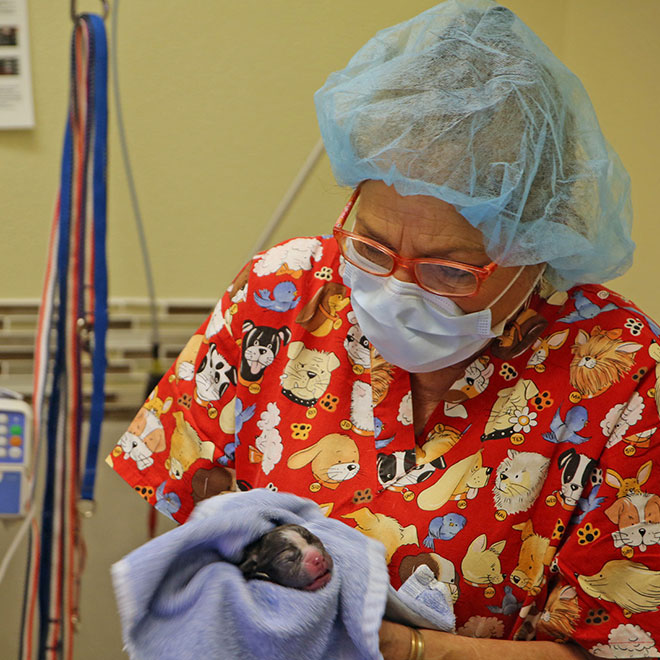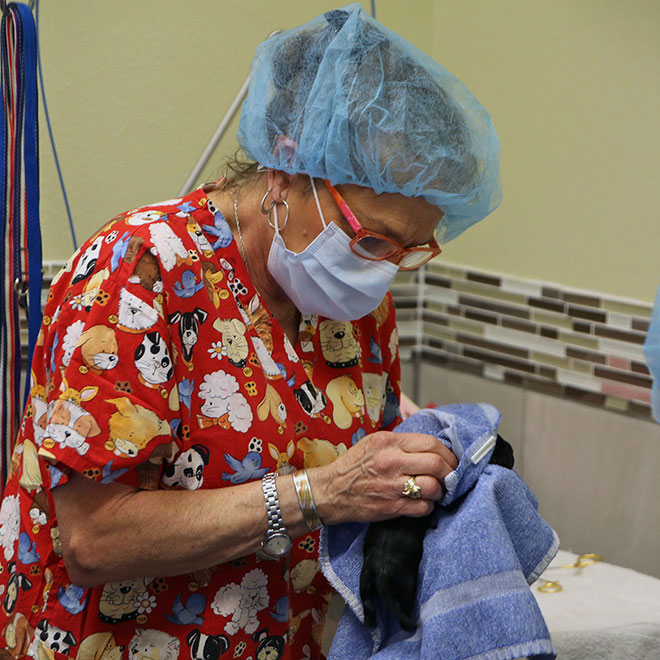Early Neurological Stimulation
Surprising as it may seem, it isn’t capacity that explains the differences that exist between individuals because most seem to have far more capacity than they will ever use. The differences that exist between individuals seem to be related to something else. The ones who achieve and outperform others seem to have within themselves the ability to use hidden resources. In other words, it’s what they are able to do with what they have that makes the difference.
 In many animal-breeding programs the entire process of selection and management is founded on the belief that performance is inherited. Attempts to analyze the genetics of performance in a systematic way have involved some distinguished names such as Charles Darwin and Francis Galton. But it has only been in recent decades that good estimates of heritability of performance have been based on adequate data. Cunningham (1991) in his study of horses found that only by using Time form data, and measuring groups of halfbrothers and half-sisters could good estimates of performance be determined. His data shows that performance for speed is about 35% heritable. In other words only about 35% of all the variation that is observed in track performance is controlled by heritable factors, the remaining 65% are attributable to other influences, such as training, management and nutrition. Cunningham’s work while limited to horses provides a good basis for understanding how much breeders can attribute to the genetics and the pedigrees. Researchers have studied this phenomena and have looked for new ways to stimulate individuals in order to improve their natural abilities. Some of the methods discovered have produced life long lasting effects. Today, many differences between individuals are now explained by the use of early stimulation methods.
In many animal-breeding programs the entire process of selection and management is founded on the belief that performance is inherited. Attempts to analyze the genetics of performance in a systematic way have involved some distinguished names such as Charles Darwin and Francis Galton. But it has only been in recent decades that good estimates of heritability of performance have been based on adequate data. Cunningham (1991) in his study of horses found that only by using Time form data, and measuring groups of halfbrothers and half-sisters could good estimates of performance be determined. His data shows that performance for speed is about 35% heritable. In other words only about 35% of all the variation that is observed in track performance is controlled by heritable factors, the remaining 65% are attributable to other influences, such as training, management and nutrition. Cunningham’s work while limited to horses provides a good basis for understanding how much breeders can attribute to the genetics and the pedigrees. Researchers have studied this phenomena and have looked for new ways to stimulate individuals in order to improve their natural abilities. Some of the methods discovered have produced life long lasting effects. Today, many differences between individuals are now explained by the use of early stimulation methods.
Man for centuries has tried various methods to improve performance. Some of the methods have stood the test of time, others have not. Those who first conducted research on this topic believed that the period of early age was a most important time for stimulation because of its rapid growth and development. Today, we know that early life is a time when the physical immaturity of an organism is susceptible and responsive to a restricted but important class of stimuli. Because of its importance many studies have focused their efforts on the first few months of life.
Newborn pups are uniquely different than adults in several respects. When born their eyes are closed and their digestive system has a limited capacity requiring periodic stimulation by their dam who routinely licks them in order to promote digestion. At this age they are only able to smell, suck, and crawl. Body temperature is maintained by snuggling close to their mother or by crawling into piles with other littermates. During these first few weeks of immobility researchers noted that these immature and under-developed canines are sensitive to a restricted class of stimuli which includes thermal, and tactile stimulation, motion and locomotion.
Other mammals such as mice and rats are also born with limitations and they also have been found to demonstrate a similar sensitivity to the effects of early stimulation. Studies show that removing them from their nest for three minutes each day during the first five to ten days of life causes body temperatures to fall below normal. This mild form of stress is sufficient to stimulate hormonal, adrenal and pituitary systems. When tested later as adults, these same animals were better able to withstand stress than littermates who were not exposed to the same early stress exercises. As adults, they responded to stress in “a graded” fashion, while their non-stressed littermates responded in an “all or nothing way.” Data involving laboratory mice and rats also shows that stress in small amounts can produce adults who respond maximally. On the other hand, the results gathered from nonstressed littermate show that they become easily exhausted and would near death if exposed to intense prolonged stress. When tied down so they were unable to move for twenty-four hours, rats developed severe stomach ulcers, but litter mates exposed to early stress handling were found to be more resistant to stress tests and did not show evidence of ulcers. A secondary affect was also noticed.
Sexual maturity was attained sooner in the littermates given early stress exercises. When tested for differences in health and disease, the stressed animals were found to be more resistant to certain forms of cancer and infectious diseases and could withstand terminal starvation and exposure too cold for longer periods than their non-stressed littermates. Other studies involving early stimulation exercises have been successfully performed on both cats and dogs. In these studies, the Electrical Encephalogram (EEG) was found to be ideal for measuring the electrical activity in the brain because of its extreme sensitivity to changes in excitement, emotional stress, muscle tension, changes in oxygen and breathing. EEG measures show that pups and kittens when given early stimulation exercises mature at faster rates and perform better in certain problem solving tests than non-stimulated mates. In the higher level animals the effect of early stimulation exercises have also been studied. The use of surrogate mothers and familiar objects were tested by both of the Kellogg’s’ and Dr. Yearkes using young chimpanzees. Their pioneer research shows that the more primates were deprived of stimulation and interaction during early development, the less able they were to cope, adjust and later adapt to situations as adults. While experiments have not yet produced specific information about the optimal amounts of stress needed to make young animals psychologically or physiologically superior, researchers agree that stress has value. What also is known is that a certain amount of stress for one may be too intense for another, and that too much stress can retard development. The results show that early stimulation exercises can have positive results but must be used with caution. In other words, too much stress can cause pathological adversities rather than physical or psychological superiority.
Methods of Stimulation
The U.S. Military in their canine program developed a method that still serves as a guide to what works. In an effort to improve the performance of dogs used for military purposes, a program called “Bio Sensor” was developed. Later, it became known to the public as the “Super Dog” Program. Based on years of research, the military learned that early neurological stimulation exercises could have important and lasting effects. Their studies confirmed that there are specific time periods early in life when neurological stimulation has optimum results. The first period involves a window of time that begins at the third day of life and lasts until the sixteenth day. It is believed that because this interval of time is a period of rapid neurological growth and development, and therefore is of great importance to the individual.
The “Bio Sensor” program was also concerned with early neurological stimulation in order to give the dog a superior advantage. Its development utilized six exercises which were designed to stimulate the neurological system. Each workout involved handling puppies once each day. The workouts required handling them one at a time while performing a series of five exercises. Listed in order of preference the handler starts with one pup and stimulates it using each of the five exercises. The handler completes the series from beginning to end before starting with the next pup. The handling of each pup once per day involves the following exercises:
Neurological Stimulation Program Details
The five exercises are as follows. The duration of each of the five exercises is 3-5 seconds.
1. Tactical stimulation (between toes)
Holding the pup in one hand, the handler gently stimulates (tickles) the pup between the toes on any one foot using a Q-tip. It is not necessary to see that the pup is feeling the tickle.
2. Head held erect
Using both hands, the pup is held perpendicular to the ground, (straight up), so that its head is directly above its tail. This is in an upwards position.
3. Head pointed down
Holding the pup firmly with both hands the head is reversed and is pointed downward, towards the ground.
4. Supine position
Hold the pup so that its back is resting in the palm of both hands with its muzzle facing the ceiling. The pup while on its back is allowed to sleep struggle.
5. Thermal stimulation
Use a damp towel that has been cooled in a refrigerator for at least five minutes. Place the pup on the towel, feet down. Do not restrain it from moving.

These five exercises will produce neurological stimulations, none of which naturally occur during this early period of life. Experience shows that sometimes pups will resist these exercises, others will appear unconcerned. In either case a caution is offered to those who plan to use them. Do not repeat them more than once per day and do not extend the time beyond that recommended for each exercise. Over stimulation of the neurological system can have adverse and detrimental results? These exercises impact the neurological system by kicking it into action earlier than would be normally expected. The result being an increased capacity that later will help to make the difference in its performance. Those who play with their pups and routinely handle them should continue because the neurological exercises are not substitutions for routine handling, play socialization or bonding.
Benefits of Stimulation
Five benefits have been observed in canines that were exposed to the Bio Sensor stimulation exercises.
The benefits noted were:
1. Improved cardio vascular performance (heart rate)
2. Stronger heart beats
3. Stronger adrenal glands
4. More tolerance to stress
5. Greater resistance to disease
In tests of learning, stimulated pups were found to be more active and were more exploratory than their non- stimulated littermates over which they were dominant in competitive situations.
Secondary effects were also noted regarding test performance. In simple problem solving tests using detours in a maze, the non-stimulated pups became extremely aroused, whined a great deal, and made many errors. Their stimulated littermates were less disturbed or upset by test conditions and when comparisons were made, the stimulated littermates were more calm in the test area, made fewer errors and gave only an occasional distress when stressed.
Thanks to Dr. Marty Greer for sharing this valuable content from her Breeder’s Library
Her book “Canine Reproduction & Neonatology” is invaluable to breeders and is available on Amazon.


 Tap to Call Now
Tap to Call Now